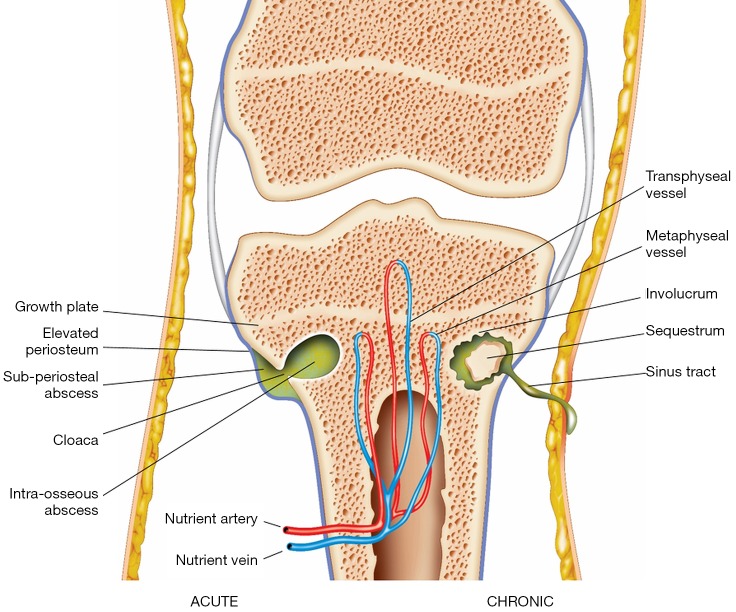Figure 1.
The pathogenesis of osteomyelitis. Metaphyseal vessels contain slow-flowing blood, predisposing to bacterial proliferation. Hence, the metaphysis is a common site for haematogenous osteomyelitis. The growth plate forms a barrier between the metaphyseal and epiphyseal vessels in children over 18 months of age. However, in infants under 18 months and in adults, transphyseal vessels are present which provide a route for infection to communicate between the metaphysis and epiphysis. In acute osteomyelitis, a collection of pus becomes surrounded by granulation tissue and reactive bone, forming an intraosseous abscess. Raised intramedullary pressure secondary to accumulation of pus leads to rupture of the cortex, creating a defect known as a cloaca, which drains pus from the bone to the surrounding tissues. This can cause a subperiosteal abscess with elevation of the periosteum, as well as soft tissue abscesses. In chronic osteomyelitis, disruption of the intraosseous and periosteal blood supply leads to formation of a necrotic bone fragment, known as a sequestrum, which is surrounded by pus and granulation tissue. A reactive shell of new bone forms around the sequestrum and is known as an involucrum. A sinus tract, which drains pus from bone to the skin surface, may be present in both acute and chronic osteomyelitis.

